

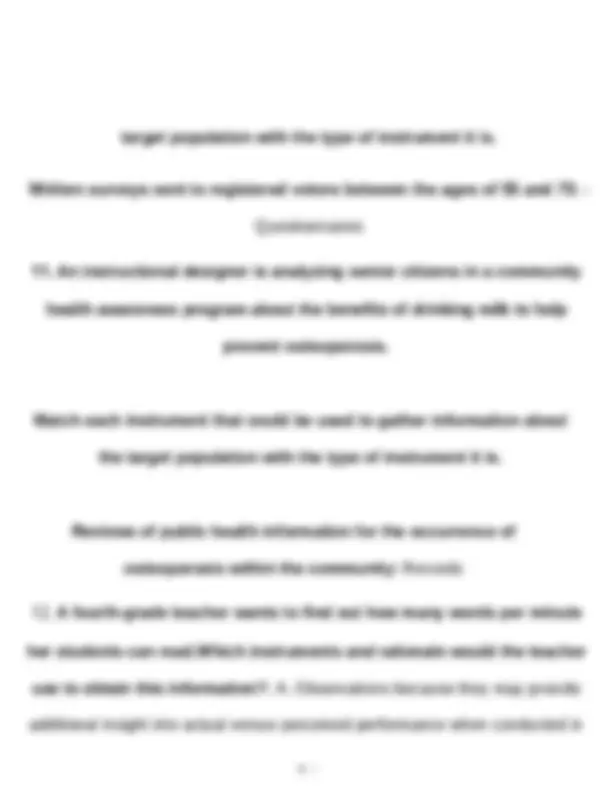
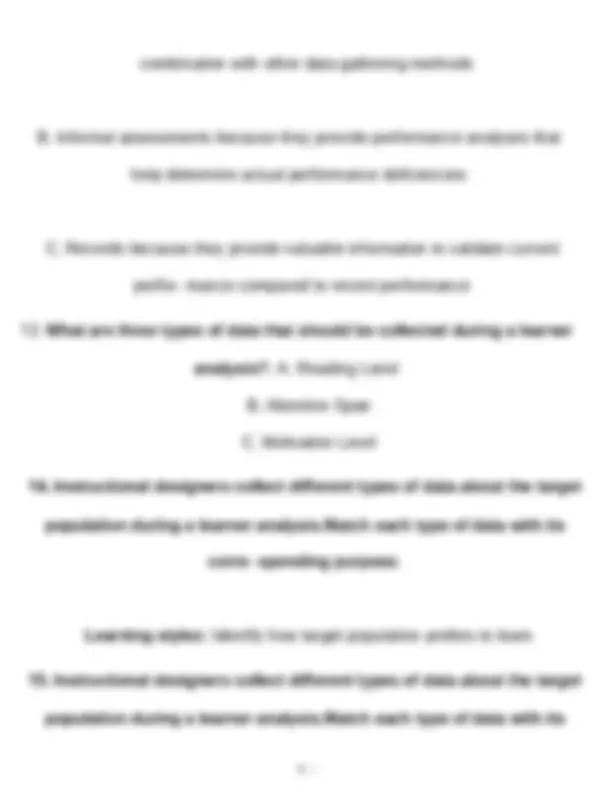
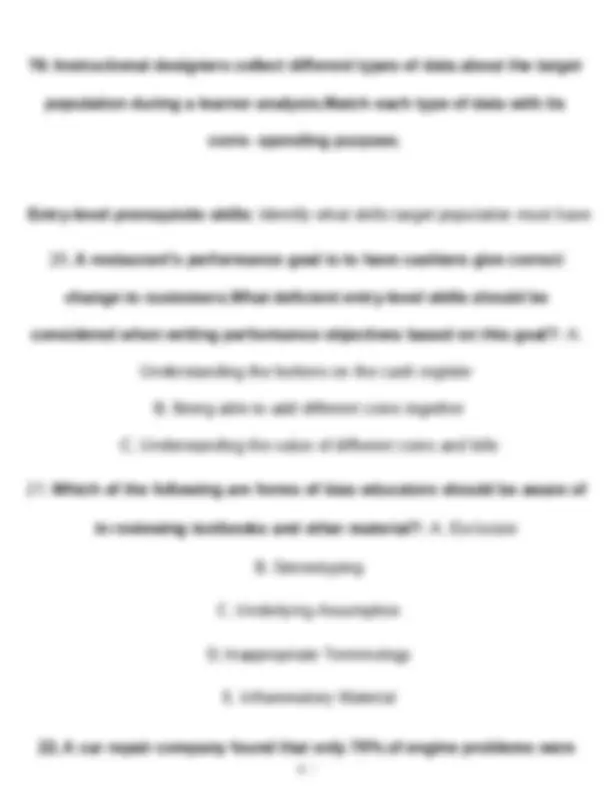

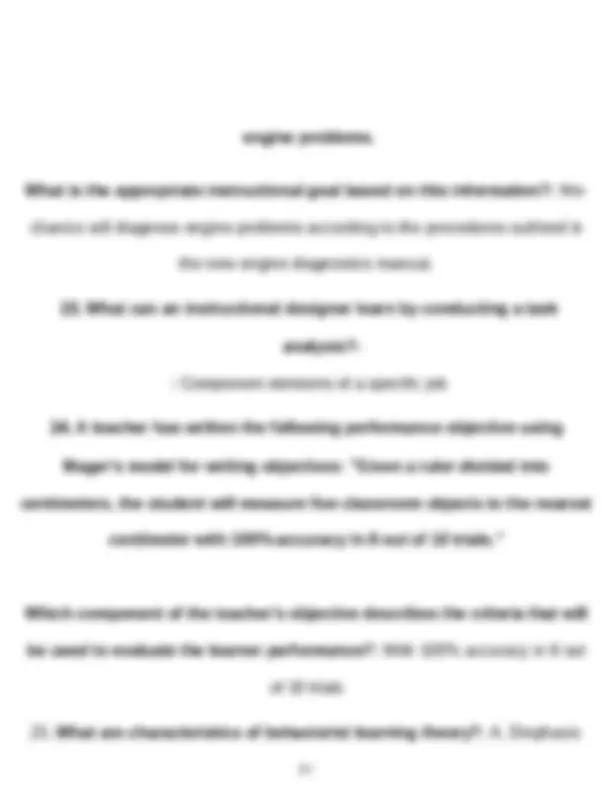
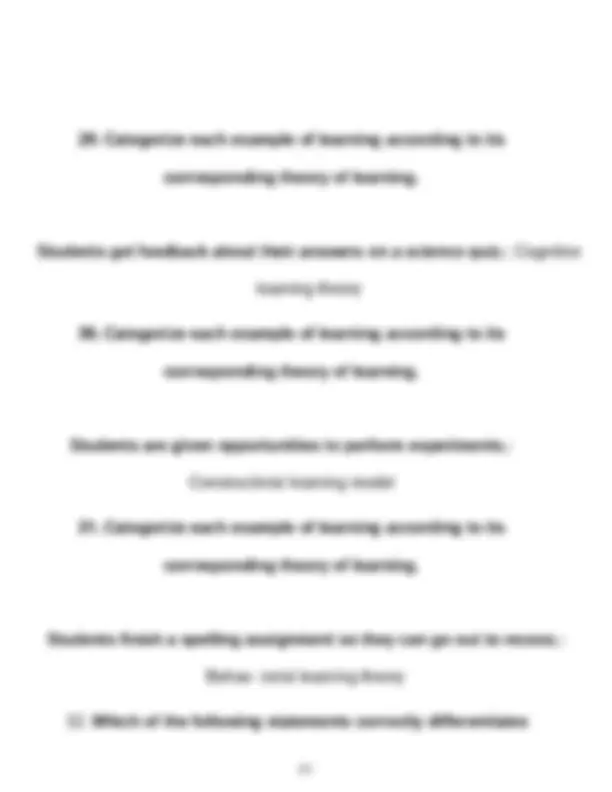
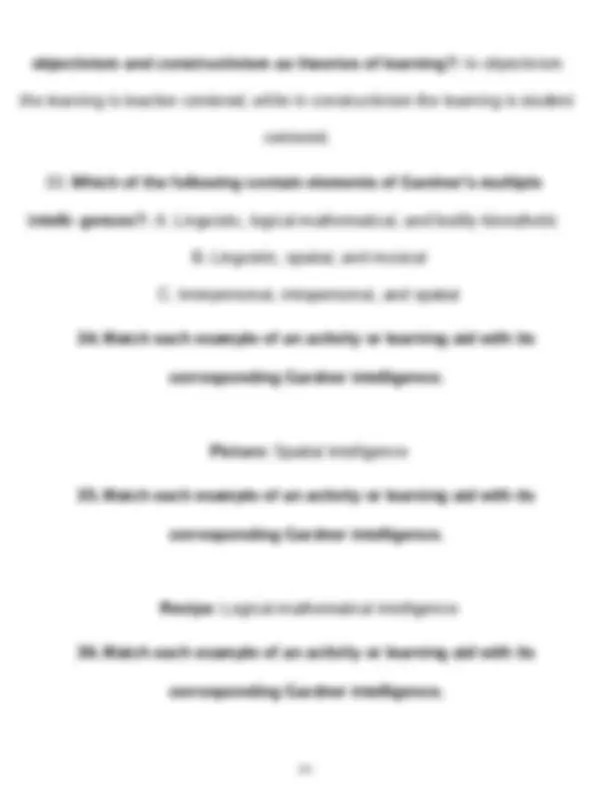


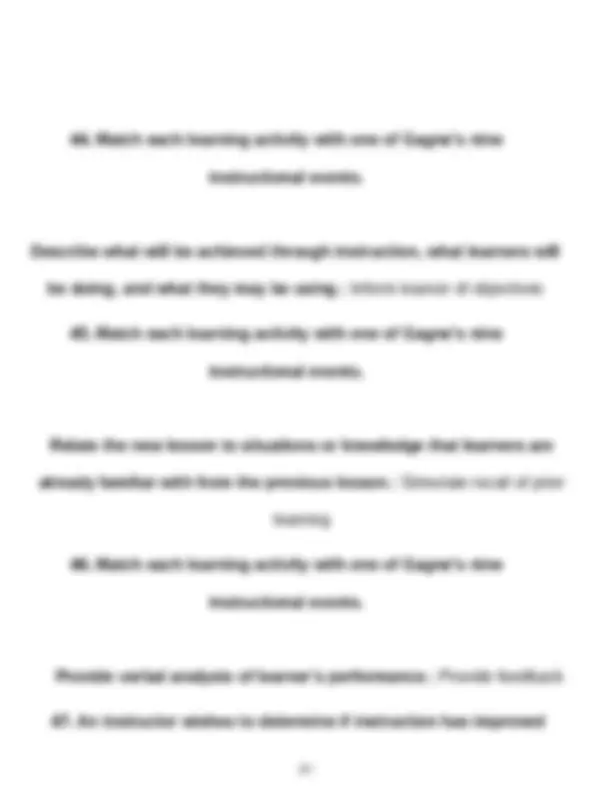
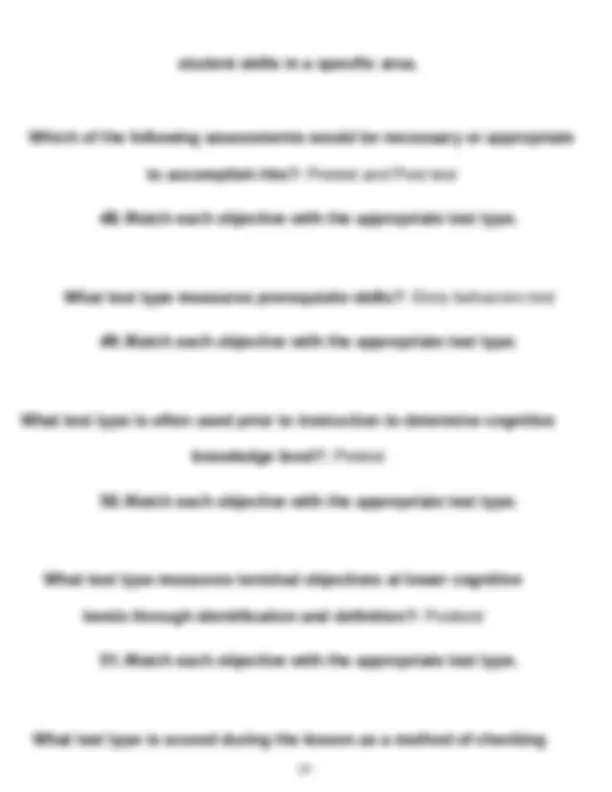



Study with the several resources on Docsity

Earn points by helping other students or get them with a premium plan


Prepare for your exams
Study with the several resources on Docsity

Earn points to download
Earn points by helping other students or get them with a premium plan
Community
Ask the community for help and clear up your study doubts
Discover the best universities in your country according to Docsity users
Free resources
Download our free guides on studying techniques, anxiety management strategies, and thesis advice from Docsity tutors
1. Pre-assessment exam preparation strategies 2. How to study for a pre-assessment exam 3. Pre-assessment exam practice questions online 4. Tips for passing a pre-assessment exam 5. Pre-assessment exam format and structure 6. Best resources for pre-assessment exam review 7. Common mistakes to avoid on pre-assessment exams 8. Pre-assessment exam time management techniques 9. How to interpret pre-assessment exam results 10. Pre-assessment exam anxiety coping methods 11. Difference between pre-assessment and final exams 12. Pre-assessment exam scoring system explained 13. How to improve pre-assessment exam performance 14. Pre-assessment exam study schedule template 15. What to expect on a pre-assessment exam 16. Pre-assessment exam question types and examples 17. How to use pre-assessment exam feedback effectively 18. Pre-assessment exam retake policies and procedures 19. Best pre-assessment exam study groups near me 20. Pre-assessment exam accommodations for special needs
Typology: Exams
1 / 21

This page cannot be seen from the preview
Don't miss anything!














8. An instructional designer is analyzing senior citizens in a community health awareness program about the benefits of drinking milk to help prevent osteoporosis. Match each instrument that could be used to gather information about the target population with the type of instrument it is. Face-to-face conversations with individuals who are between the ages of 55 and 75: Interviews 9. An instructional designer is analyzing senior citizens in a community health awareness program about the benefits of drinking milk to help prevent osteoporosis. Match each instrument that could be used to gather information about the target population with the type of instrument it is. Face-to-face conversations with small groups of members of the local senior citizen center: Focus Groups 10. An instructional designer is analyzing senior citizens in a community
target population with the type of instrument it is. Written surveys sent to registered voters between the ages of 55 and 75: - Questionnaires
11. An instructional designer is analyzing senior citizens in a community health awareness program about the benefits of drinking milk to help prevent osteoporosis. Match each instrument that could be used to gather information about the target population with the type of instrument it is. Reviews of public health information for the occurrence of osteoporosis within the community: Records
combination with other data gathering methods B. Informal assessments because they provide performance analyses that help determine actual performance deficiencies C. Records because they provide valuable information to validate current perfor- mance compared to recent performance
16. Instructional designers collect different types of data about the target population during a learner analysis.Match each type of data with its corre- sponding purpose. Demographic data (e.g., age, gender, or grade level): Identify the degree of homogeneity in target population 17. Instructional designers collect different types of data about the target population during a learner analysis.Match each type of data with its corre- sponding purpose. Prior knowledge: Identify what target population already knows 18. Instructional designers collect different types of data about the target population during a learner analysis.Match each type of data with its corre- sponding purpose. Attitudes toward delivery systems: Identify interest level toward different pre- sentation styles
19. Instructional designers collect different types of data about the target population during a learner analysis.Match each type of data with its corre- sponding purpose. Entry-level prerequisite skills: Identify what skills target population must have 20. A restaurant's performance goal is to have cashiers give correct change to customers.What deficient entry-level skills should be considered when writing performance objectives based on this goal?: A. Understanding the buttons on the cash register B. Being able to add different coins together C. Understanding the value of different coins and bills
engine problems. What is the appropriate instructional goal based on this information?: Me- chanics will diagnose engine problems according to the procedures outlined in the new engine diagnostics manual.
23. What can an instructional designer learn by conducting a task analysis?- : Component elements of a specific job 24. A teacher has written the following performance objective using Mager's model for writing objectives: "Given a ruler divided into centimeters, the student will measure five classroom objects to the nearest centimeter with 100% accuracy in 8 out of 10 trials." Which component of the teacher's objective describes the criteria that will be used to evaluate the learner performance?: With 100% accuracy in 8 out of 10 trials
on knowledge reproduction instead of knowledge construction B. Emphasis on producing observable and measurable outcomes in students C. Emphasis on contingencies of reinforcement D. Emphasis on stimulus-response learning
29. Categorize each example of learning according to its corresponding theory of learning. Students get feedback about their answers on a science quiz.: Cognitive learning theory 30. Categorize each example of learning according to its corresponding theory of learning. Students are given opportunities to perform experiments.: Constructivist learning model 31. Categorize each example of learning according to its corresponding theory of learning. Students finish a spelling assignment so they can go out to recess.: Behav- iorist learning theory
objectivism and constructivism as theories of learning?: In objectivism the learning is teacher centered, while in constructivism the learning is student centered.
Physical Experience: Body-kinesthetic intelligence
38. Match each example of an activity or learning aid with its corresponding Gardner intelligence. Social Experience: Interpersonal intelligence
B. Instructors determine acceptable evidence that desired understanding and skills have been achieved before planning instructions. Both
42. Students are shown a variety of ways to access an educational computer simulation using shortcut keys on the keyboard, drop-down menus, and button bars. Complex sequences are broken into short, step- by-step lists for easier storage in long-term memory. Instructional flash cards with visual cues to the shortcut keys are supplied to all the learners. This is an example of which of Gagne's nine events of instruction?: A. Stimulating Recall B. Presenting Stimulus Material C. Eliciting Performance D. Providing Learning Guidance E. Enhancing retention and Transfer (D)
44. Match each learning activity with one of Gagne's nine instructional events. Describe what will be achieved through instruction, what learners will be doing, and what they may be using.: Inform learner of objectives 45. Match each learning activity with one of Gagne's nine instructional events. Relate the new lesson to situations or knowledge that learners are already familiar with from the previous lesson.: Stimulate recall of prior learning 46. Match each learning activity with one of Gagne's nine instructional events. Provide verbal analysis of learner's performance.: Provide feedback 47. An instructor wishes to determine if instruction has improved
student skills in a specific area. Which of the following assessments would be necessary or appropriate to accomplish this?: Pretest and Post-test
48. Match each objective with the appropriate test type. What test type measures prerequisite skills?: Entry behaviors test 49. Match each objective with the appropriate test type. What test type is often used prior to instruction to determine cognitive knowledge level?: Pretest 50. Match each objective with the appropriate test type. What test type measures terminal objectives at lower cognitive levels through identification and definition?: Posttest 51. Match each objective with the appropriate test type. What test type is scored during the lesson as a method of checking